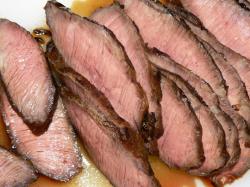Value Cuts Increase Beef Carcass Value
April 13, 2011 | 2 min to read

Beef value cuts have been developed from underutilized muscles found in the chuck and round. Traditionally these cuts were made into ground beef or roasts. Over the past decade, the Beef Checkoff has funded research to establish alternative options for beef muscles. A beef muscle profiling study characterized beef muscles in terms of tenderness, palatability, and functionality. Subsequently, individual muscles are the basis for most new value beef cuts.
Consumers want convenience, small portion size, and healthy protein options, but they still require an enjoyable eating experience found through acceptable flavor, juiciness and tenderness. The days of traditional pot-roast cuts that require slow cooking at low temperatures do not fit into the average American’s lifestyle. The beef industry developed value cuts to meet consumer demand. In general, the retail meat case has smaller portion and package sizes, more heat-and-eat options, and a greater diversity of products available compared to several decades ago.
Several beef value cuts have been identified from the chuck. In general, these muscles are more tender than a ribeye steak. The flat iron, ranch steak and petite tender originate from the shoulder area of the animal. The delmonico steak, boneless country-style ribs and America’s beef roast have been identified from the chuck roll. The Denver cut comes from under the shoulder bone (blade bone) and is an appropriate everyday steak. The flat-iron steak is showcased by many major retailers. Other cuts, such as America’s beef roast is a prime rib alternative that suits hotels, restaurants, and institutions. Beef Checkoff data indicates that value cuts from the chuck add $70 to $100 of value per head of beef harvested. This equates to around $2 billion per year in added value to the industry.
To read the rest of the story, please go to: Michigan State University Extension
